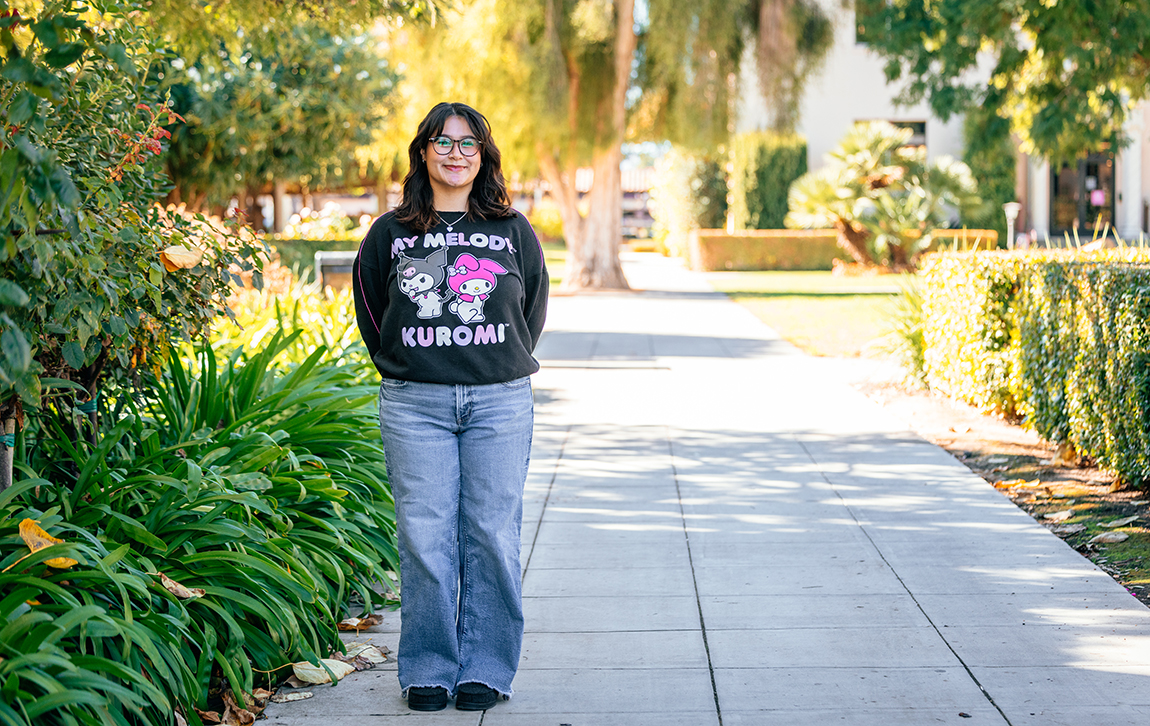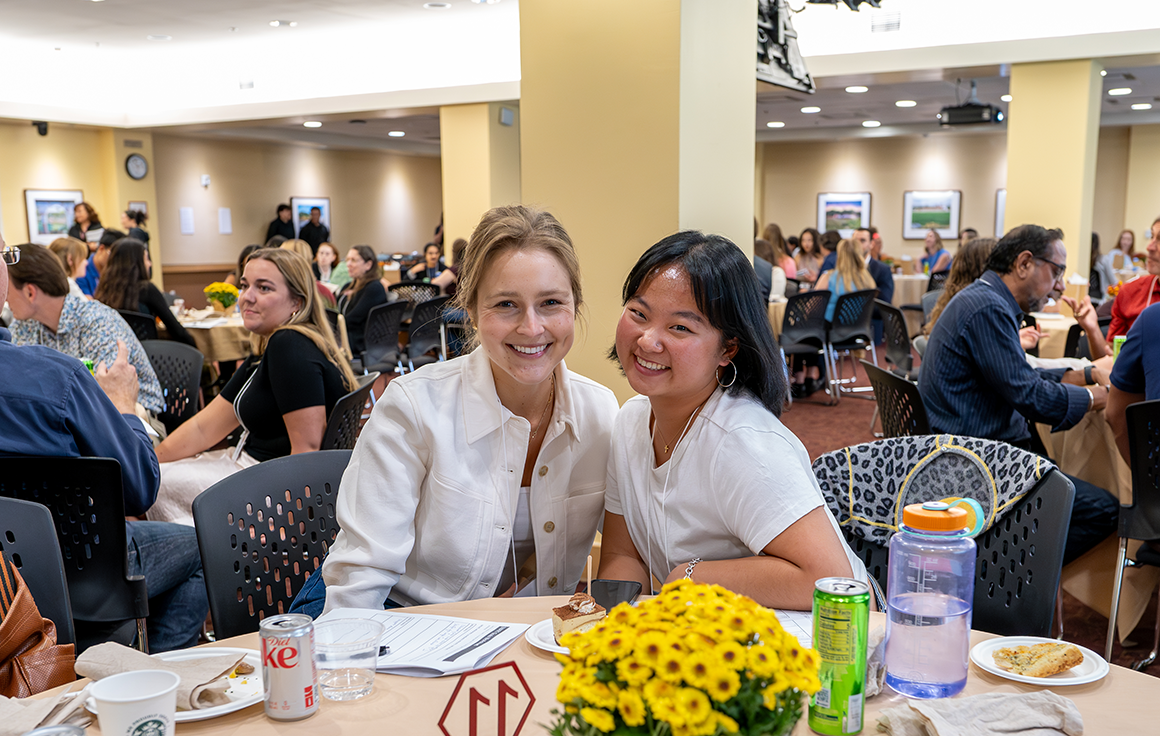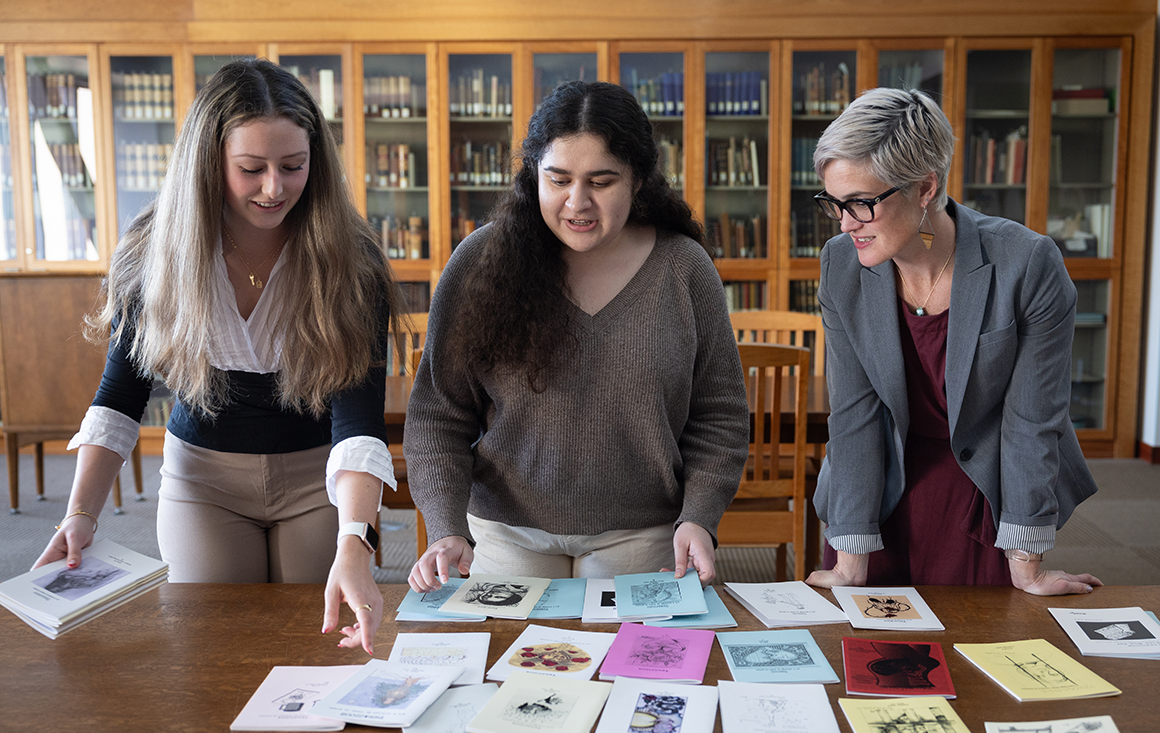A Vision of Service

When Chris Harris was young, he envied his classmates who dreamed of careers as architects or astronauts. “I didn’t know what I wanted, but I knew one thing: I liked helping and serving people.”
This sense of service has guided him in his career starting in admissions at his alma mater, University of Michigan, to community nonprofit work and elementary education. “Because I never felt like I was an expert at anything, I always wanted to humble myself and listen to whatever population I was working with and ask: ‘What do you need?’” explains Harris. “That’s allowed me to be able to plug into a lot of different spaces and be successful.”
Most recently as an assistant director at Santa Clara University’s Career Center, he continued to ask meaningful questions to connect marginalized students to crucial campus resources—like the LEAD Scholars Program and the Diversity Works Expo & Awards. His role’s focus on identity allowed him the chance to help students succeed, not just at SCU, but in their post-grad careers.
Now, Harris is settling into his newest role as the director of the Office for Multicultural Learning (OML), which includes the Rainbow Resource Center (RRC). His mission? To lean into his passion for service and the betterment of the entire Bronco community. We recently spoke to Harris about his passion and what’s next for OML/RRC.

Harris outside the Office for Multicultural Learning (OML) on Market Street.
What excited you most about taking on leadership of OML/RRC?
Two years ago, my wife and I moved our three daughters and our big black dog out here. Santa Clara is our community. We love it, and we want to make sure that we continue to help it as best we can. When this role at OML/RRC opened up, I didn’t think twice because I knew firsthand the impact that I could have.
Growing up, I came from a very happy and proud Black family that encouraged me to love learning. But going to college as a Black first-gen student, navigating those spaces was difficult. College can be intimidating and isolating—I remember being one of the only Black kids in my economics class at the University of Michigan. But eventually, I found my community, leveraged my resources, and realized that I could truly be successful.
That transformative experience was one of my biggest motivations to accept this role. A lot of the resources I want us to amplify are things that I wish I had access to when I was a student. By doing this, we can create an environment that invites, encourages, and supports everyone to be their most authentic, beautiful, and full selves.
What are some of your goals in this role?
I think we could do more to communicate our vision for what OML/RRC aims to be on campus. That means asking what comes to mind when students, staff, and faculty think about OML/RRC—or if they even think about us at all. My vision is for our office to be seen as the clearinghouse for all matters of identity education, advocacy, and belonging at SCU—but we have to make sure that everyone knows what services we offer, how we build community, how we create spaces, and how we educate folks.
I also think that we can be a little bit more efficient with our time and energy. I want to push for that and make sure that we are setting boundaries so our students and staff are not burning ourselves out. DEI is hard, heavy work, and we have to take care of the people who do that work.
How do you see yourself collaborating or engaging with students?
It makes me so happy to be able to listen—honestly and intently—to our students. I love kicking it with them, getting to know where they’re from, what their chosen and biological families are like, and their thoughts on the gaps and needs at SCU. After taking in all of this information, I can feel informed enough to figure out a plan.
It’s hard to accomplish anything if you don’t like or trust the person you’re talking to, you know? I just want the chance to sit back, grab lunch, and build natural, authentic, trust-building relationships with folks. Talk with people, learn about their motivations, practice vulnerability, and ask “What do you need?” That’s where the magic happens.
You mentioned burnout. How do you hope OML/RRC can help student leaders in this regard?
From every corner of campus, we keep hearing how busy everyone is. Everyone has a life and things that they’re navigating. For a lot of our students, they pour so much into their extracurriculars and community groups because that is their only place of solace. We have to make sure as they carry the torch for their community, they’re still able to get their diploma and successfully prepare for what comes after they leave Santa Clara.
There is a toxic culture in our society where we’re told that if you’re not tired, you’re not working hard enough, and that’s wrong. I think it’s important to figure out that balance and to find joy outside of all the work. We have to be thoughtful about mind, body, and spirit so we can be the best versions of ourselves.
I really want OML/RRC to lead that charge and model that for student leaders—while still doing our work at a high level.

Harris at the Rainbow Resource Center (RRC) in the basement of Benson.
You’ve stated that accessibility was one of several issues you’d be focusing on in this role. What does accessibility mean to you, and what might increased accessibility look like at Santa Clara?
How are we making sure that our services are fully encompassing and inclusive for every person, regardless of whether they’re a current or future member of our community? That question is always in my gut—to critique the landscape and ask: “Can everyone access this experience in the same way?”
Today, I am keenly aware that there are places where people don’t feel welcome or have access, and that may not be necessarily by design, but the impact is still felt.
One central tool for progress is making sure that there are no barriers to information and space. Transformational communities need to physically invite all community members into those spaces, whether it’s a campus, classroom, or residential community. They also need to provide institutional transparency around accessing resources and foster a social environment where people are expected and actively sought out.
For me, accessibility means supporting everyone through those three things: physical space, institutional space, and social space.
Tell us about some of your favorite SCU community events you’ve attended.
This year I went to the Multicultural Center (MCC) end-of-year event—MCCBeary’s—and that was amazing. It was a huge celebration of all of our cultural clubs and identity organizations, like Igwebuike and the Latinx Student Union, all in one space. Everyone was dressed impeccably and being joyous at this fancy venue downtown, and you could feel the communal pride around getting through the year. I have to give so much kudos to the team over at MCC.
And in the fall, Grand Reunion is another really fun event, mostly because that gives me the opportunity to interact with our alumni—and they love this place. They miss this place, and they have great memories of this place. I have never been somewhere that has this level of pride, whether they graduated in ’77, ’85, or 2021. The investment, love, passion, and overall astonishment people have with this institution are contagious. It's beautiful. It makes me want to do right by the people who want to see this place be even greater than it already is.
As a part of the Inclusive Excellence Division, the Office for Multicultural Learning is committed to promoting social justice, building bridges across diverse communities, and celebrating differences of students at Santa Clara University.


